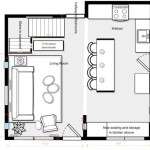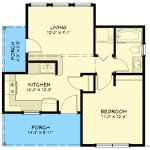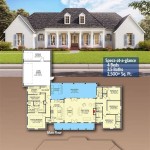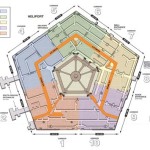Victorian Row House Floor Plans: A Glimpse into 19th-Century Urban Living
Victorian row houses, a ubiquitous feature of many urban landscapes, offer a fascinating glimpse into 19th-century domestic life. Their floor plans, often standardized yet adaptable to individual needs, reflect the social and economic realities of the era. Understanding these plans provides valuable insight into the history of urban development and the evolution of domestic architecture.
A defining characteristic of Victorian row house floor plans is their narrow width and considerable depth. This elongated shape, dictated by the limited street frontage available in burgeoning cities, resulted in a distinctive layout. Typically, the front façade presented a narrow, often ornate, presentation to the street, while the house extended back, sometimes encompassing a small rear yard or garden.
The entrance hallway, a significant feature of Victorian row houses, served as a transitional space between the public street and the private domestic sphere. This hallway often featured decorative tiling, a staircase leading to the upper floors, and doors leading to the principal ground floor rooms. The layout emphasized privacy, with rooms generally accessed from the hallway rather than directly from one another.
The front parlor, often the most formally decorated room in the house, functioned as a reception room for guests. It provided a space for entertaining visitors and showcasing the family’s social standing through furnishings and décor. Large windows facing the street allowed natural light to illuminate the room, emphasizing its importance within the household.
Located towards the rear of the ground floor, the dining room served as the center for family meals. Its proximity to the kitchen facilitated serving and cleanup. In some larger houses, a separate living room or family room might also be located on the ground floor, offering a more informal space for family gatherings.
The kitchen, typically situated at the back of the house, played a vital role in the daily routines of the Victorian household. While often smaller and less technologically equipped than modern kitchens, it was the hub of domestic activity, where meals were prepared and household chores were performed. Access to the rear yard or garden was often provided from the kitchen.
The upper floors of Victorian row houses typically housed the bedrooms and bathrooms. The main staircase, often prominently located in the entrance hall, provided access to these private spaces. The arrangement of bedrooms typically followed a hierarchical pattern, with the largest and most desirable rooms reserved for the heads of the household.
Smaller bedrooms were allocated to children or other family members. The placement of bedrooms often reflected social conventions of the time, with separate sleeping quarters for servants sometimes located on the upper floors or in the attic space.
Bathrooms, a relatively new addition to domestic architecture during the Victorian era, were gradually incorporated into row house designs. Initially, these facilities might have been limited to a simple water closet, but as plumbing technology advanced, more elaborate bathrooms with bathtubs and sinks became increasingly common.
Attic spaces, often accessible via a back staircase, served a variety of purposes in Victorian row houses. They could be used for storage, as servants’ quarters, or even as additional bedrooms for larger families. These spaces, while often less finished than the main living areas, provided valuable additional space within the confines of the narrow row house footprint.
Variations in Victorian row house floor plans reflect the diverse architectural styles and regional preferences of the era. Italianate, Queen Anne, and Gothic Revival influences are often visible in the exterior ornamentation and interior details of these houses. Regional variations also exist, reflecting differences in climate, building materials, and local traditions.
The study of Victorian row house floor plans offers valuable insights into the social and cultural history of 19th-century urban life. These plans reveal how families lived, interacted, and organized their domestic spaces. The evolution of these plans also reflects changing societal norms, technological advancements, and the increasing importance of privacy and comfort in the domestic sphere.
Architectural details within the floor plans, such as the placement of fireplaces, the size and location of windows, and the inclusion of specific rooms, provide further clues about the lifestyles of the inhabitants. These seemingly minor details can reveal much about the social and economic status of the occupants, their daily routines, and their priorities in creating a comfortable and functional home.
Preservation and restoration efforts focusing on Victorian row houses often utilize original floor plans as a guide for accurately recreating historical interiors. These plans serve as invaluable resources for understanding the original design intent and ensuring that restoration work respects the architectural integrity of these historic structures.
The enduring popularity of Victorian row houses in many urban areas testifies to their adaptable design and architectural appeal. While modern renovations often update these homes to meet contemporary needs, the underlying structure and basic floor plan often remain remarkably similar to their 19th-century origins.

Victorian Terraced House Design Fit For Modern Lifestyle

Chapter Ii Large Town Houses Mansion Floor Plan Plans How To

Plan For A Row Of London Townhouses By Mr Kerr Architect 1864 Victorian House Plans Vintage Floor

The Gilded Age Era Vincent Astor Townhouse Mansion Floor Plan Architectural Plans House

Before Secondflrplan Jpg Image Row House Floor Plans

Floor Plans Terraces

Home Plan Charleston Place Sater Design Collection

Victorian Mid Terraced House Designed As Bachelor Playground Custom Home Plans Homes Floor

Floor Plans Terraces

Victorian Terraced House Design Fit For Modern Lifestyle








